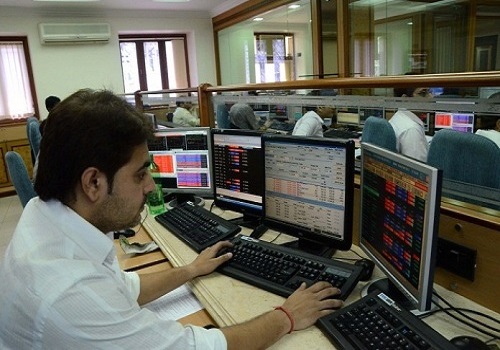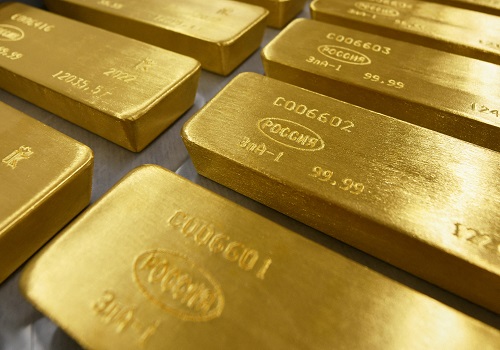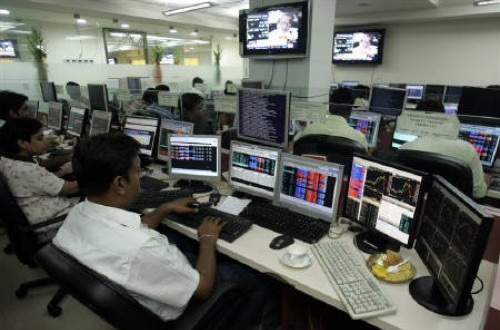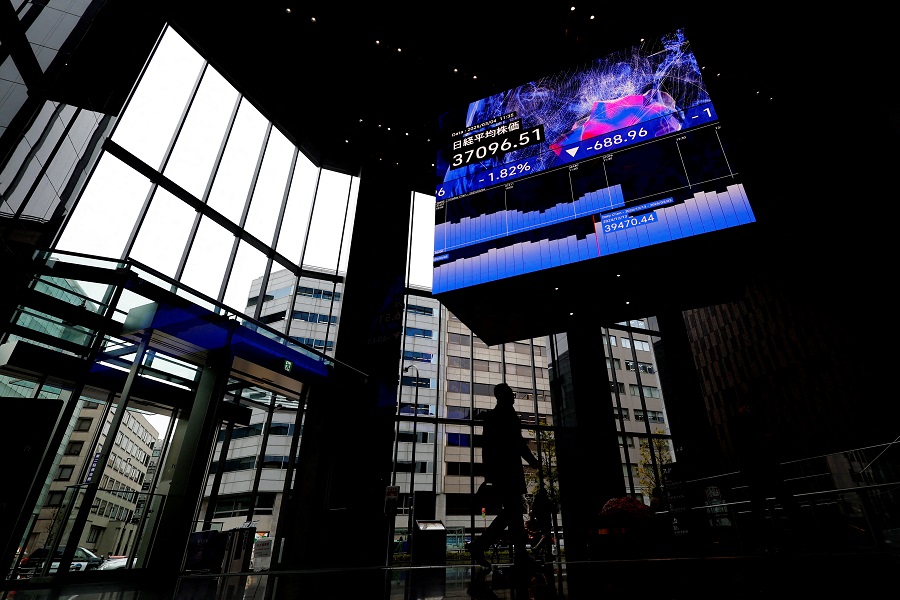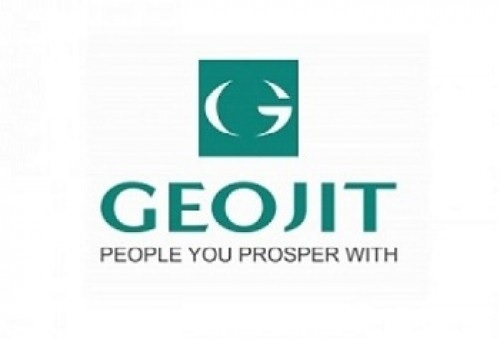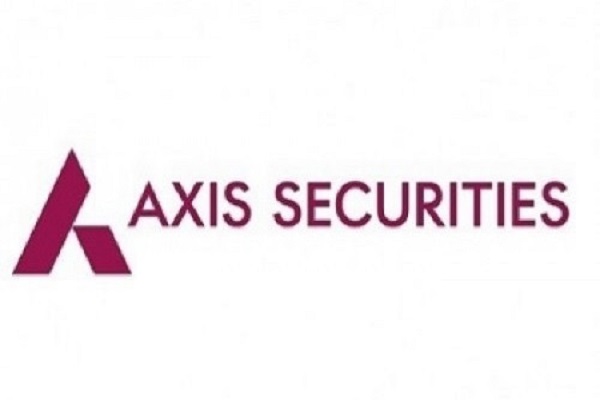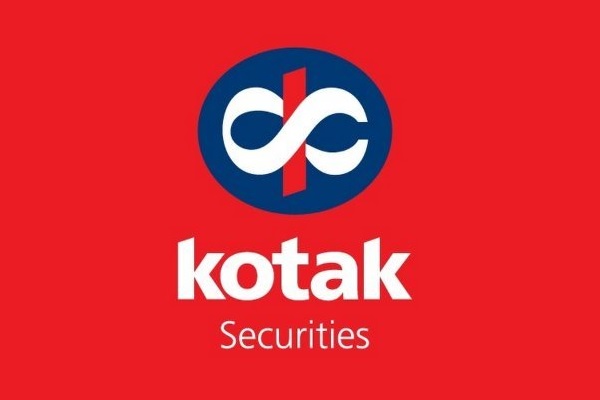Turmeric trading range for the day is 12314-12894 - Kedia Advisory

Gold
Gold prices fell sharply by 2.2% to settle at 1,20,493 per 10 grams as the dollar strengthened and investors booked profits after the announcement of a ceasefire deal between Israel and Hamas. The decline followed a record-high rally driven by geopolitical tensions and expectations of U.S. rate cuts. The latest FOMC minutes revealed that most Federal Reserve officials view it appropriate to steer the federal funds rate toward a neutral level amid rising downside risks to employment, though inflation concerns persist. Around half of Fed policymakers expect two additional rate cuts by the end of 2025. IMF Managing Director Kristalina Georgieva noted that while the U.S. economy remains resilient with 3.8% Q2 growth, slowing disinflation and persistent service inflation pose challenges for further easing. Physical demand for gold in India strengthened despite high prices, supported by festive buying, with dealers charging premiums of up to $9 per ounce. India’s gold and silver imports nearly doubled in September, while Switzerland’s gold exports to China surged 254% month-on-month to 35 tons, and shipments to India rose to 15.2 tons, reflecting robust Asian demand. However, exports to the U.S. dropped sharply amid tariff-related uncertainty. Technically, the market is under fresh selling as open interest rose by 3.77% to 16,582 while prices dropped by 2,716. Gold has immediate support at 1,19,255, and a break below could test 1,18,010. Resistance is placed at 1,22,710, with further upside possible toward 1,24,920 if buying resumes.
Trading Ideas:
* Gold trading range for the day is 118010-124920.
* Gold dropped as the dollar strengthened and investors took profits following a ceasefire deal between Israel and Hamas.
* Dovish Fed expectations and the prolonged US government shutdown keep safe-haven demand intact
* Fed officials noted that it was appropriate to move the federal funds rate toward a more neutral level.
Silver
Silver prices declined by 2.36% to settle at 1,46,324 as markets reacted to reports of a ceasefire in the Middle East, triggering profit booking after earlier hitting a historic high above $51 (1,53,000) on the MCX. The sharp rise earlier in the session was fueled by strong safe-haven demand, tight supply, and persistent concerns over U.S. fiscal risks, rising global debt, and expectations of lower interest rates. The shortage of freely available silver in the London market also lent support. According to the Silver Institute, the global silver deficit is expected to narrow by 21% to 117.6 million ounces in 2025, with total supply up 2% and demand down 1%. Industrial consumption is projected to remain steady at a record level of around 680 million ounces, while jewellery and silverware demand could soften. However, demand for silver coins and bars is expected to rebound by 7% after last year’s steep decline. Silver ETP holdings rose to 1.13 billion ounces by mid-2025, marking strong investor appetite, with the total value exceeding $40 billion for the first time. Technically, the market remains under fresh selling pressure, as open interest surged by 21.23% to 26,885 contracts while prices dropped 3,531. Silver has immediate support at 1,42,350, and a break below could test 1,38,380, while resistance is seen at 1,51,840, above which prices may test 1,57,360.
Trading Ideas:
* Silver trading range for the day is 138380-157360.
* Silver prices retreated sharply as markets reacted to Middle East ceasefire reports.
* Earlier, prices surged to historic highs, above $51 and crossing ?1,53,000 on MCX for the first time ever
* The prolonged US government shutdown and rising global uncertainties fueled safe-haven demand
Crude oil
Crude oil prices declined by 2.04% to settle at 5,462 per barrel as markets reacted to reports of a potential ceasefire deal in Gaza, easing geopolitical tensions in the Middle East. On the supply front, U.S. crude inventories rose for a second straight week by 1.8 million barrels to 416.5 million barrels, although they remain near seasonal lows. The EIA reported a decline in stockpiles at the Cushing hub and lower refinery runs, while gasoline inventories surged by 4.1 million barrels and distillate stocks rose by 578,000 barrels, signaling weaker refining margins and moderate demand recovery. OPEC+ maintained its global oil demand growth forecast for 2025, citing continued strength in global economic activity. The group raised crude output by 509,000 barrels per day in August as part of its plan to unwind previous production cuts, with Saudi Arabia and Russia leading the expansion to regain market share from U.S. shale producers. Russia’s output rose to 9.17 million bpd in August, and officials indicated no immediate need for further diesel export restrictions. Technically, crude oil is under long liquidation as open interest fell by 4.58% to 11,259 contracts while prices dropped 114. The commodity has immediate support at 5,414, and a break below could test 5,365, while resistance is seen at 5,551, above which prices may move toward 5,639.
Trading Ideas:
* Crudeoil trading range for the day is 5365-5639.
* Crudeoil dropped as investors weighed a ceasefire deal in Gaza that could ease tensions in the Middle East.
* US crude inventories rose for a second consecutive week but remained close to seasonal lows, according to EIA data.
* Stockpiles at the Cushing hub and refined product inventories declined, while total petroleum products supplied, climbed to 21.99 mbpd.
Natural gas
Natural gas prices declined by 1.92% to settle at 290.6 as markets reacted to a larger-than-expected storage build and slightly higher daily output than forecast. The U.S. Energy Information Administration (EIA) reported that utilities injected 80 billion cubic feet (bcf) of gas into storage for the week ending October 3, 2025, surpassing expectations of a 76 bcf build. This brought total stockpiles to 3,641 bcf — 23 bcf higher than last year and 157 bcf above the five-year average — indicating ample supply ahead of the winter season. Production levels also remained elevated despite recent declines. According to LSEG, average gas output in the Lower 48 states stood at 106.3 billion cubic feet per day (bcfd) in October, down from 107.4 bcfd in September but still near record highs. The EIA’s latest outlook projects U.S. dry gas production to average 106.6 bcfd in 2025 before easing slightly to 106 bcfd in 2026, while consumption is seen rising to 91.5 bcfd this year. Liquefied natural gas (LNG) exports are expected to expand to 14.7 bcfd in 2025 and 16.3 bcfd in 2026, reflecting robust international demand. Technically, the market is under long liquidation as open interest fell by 2.68% to 31,495 while prices declined 5.7. Natural gas has immediate support at 286.6, and a break below could test 282.7, while resistance is now seen at 298, with further upside likely toward 305.5 on sustained buying.
Trading Ideas:
* Naturalgas trading range for the day is 282.7-305.5.
* Natural gas eased on a slightly bigger than expected storage build and a smaller decline in daily output than expected.
* That decline came despite forecasts for cooler, more near-normal weather and higher demand over the next two weeks than previously projected.
* US utilities added 80 billion cubic feet of gas into storage during the week that ended October 3, 2025.
Copper
Copper prices rose by 0.39% to settle at 1003.25, tracking gains on the LME where prices touched $11,000 a ton — the highest in over 16 months — amid supply disruptions and renewed speculative inflows. Concerns over shortages intensified as Teck Resources cut its long-term production forecast at its Quebrada Blanca mine in Chile, while operations at Grasberg in Indonesia, Kamoa-Kakula in Congo, and El Teniente in Chile faced temporary halts. Analysts estimate these disruptions could remove nearly 591,000 tons of copper output through 2026, prompting Goldman Sachs, Citi, and Bank of America to raise their price outlooks. LME copper inventories dropped to 139,475 tons, their lowest since July, signaling tightening supply, while the cash-to-three-month discount narrowed to $13 per ton. On the demand side, China’s refined copper production fell 5% in early September, and copper imports dipped 11.5% in August to 425,000 tons, though concentrate imports rose 8% to 2.76 million tons. Meanwhile, Aurubis, Europe’s largest smelter, raised its 2026 premium by 38% to a record $315 per ton, reflecting strong demand expectations. The International Copper Study Group projected a refined copper surplus of 178,000 tons in 2025 before swinging to a 150,000-ton deficit in 2026. Technically, the market is under short covering as open interest fell by 11.95% to 7,168 while prices gained 3.9. Copper finds support at 994, and a break below could test 984.8, while resistance is seen at 1,019.4, with further upside toward 1,035.6 on strength.
Trading Ideas:
* Copper trading range for the day is 984.8-1035.6.
* Copper on MCX hits all time high of 1026.45 tracking LME prices hits $11,000 a ton for first time since May 2024
* Support seen as widespread disruption at mines sparks fears of a shortage of supply and attracts speculative inflows.
* The ICSG cut its 2025 market surplus estimate on Wednesday to 178,000 tons from 289,000 tons.
Zinc
Zinc prices gained 0.24% to settle at 294.45 as Chinese investors returned from holidays and concerns over supply disruptions resurfaced. Tightening smelter output globally, led by Japan’s Toho Zinc Annaka plant closure and Mitsui Mining & Smelting’s planned 6.6% production cut to 106,500 metric tons for H2 FY25/26, supported sentiment. Although Ivanhoe Mines reported record quarterly output of 57,200 tons from its Kamoa-Kakula and Kipushi mines, global refined zinc supply remains constrained. The International Lead and Zinc Study Group (ILZSG) reported mined zinc output rose 6.3% in H1 2025, but refined metal production fell 2% due to smelter bottlenecks, especially in Kazakhstan and China. Inventories continue to tighten — LME zinc stocks have plunged 80% this year to just 48,825 tons, their lowest since May, while Shanghai Futures Exchange inventories dropped 2.5% weekly. The cash-to-three-month LME zinc premium climbed to $51 per ton, signaling short-term supply stress. Despite slight production recovery in China, heavy rains and maintenance delays constrained smelter activity. Meanwhile, Antamina mine in Peru expects a 67% jump in output to 450,000 tons this year, partly offsetting deficits elsewhere. ILZSG data showed the global zinc market recorded a surplus of 30,200 tons in July, following a 21,100-ton deficit in June. Technically, zinc is under short covering as open interest dropped 7.23% to 3,287 while prices rose 0.7. Support lies at 292.3 and 290.1, while resistance is seen at 298.4, with a potential move toward 302.3 if momentum sustains.
Trading Ideas:
* Zinc trading range for the day is 290.1-302.3.
* Zinc prices rose to 300 level with investors in China returning from a week-long holiday, and concerns over supply.
* Smelter output was also due to drop in Japan with the closure of the key Toho Zinc Annaka plant.
* Ivanhoe Mines produced a record 57,200 tons of zinc in the third quarter from its flagship Kamoa-Kakula and Kipushi mines.
Aluminium
Aluminium prices gained 0.7% to settle at 264.8, supported by tightening supply and falling inventories. On-warrant LME stocks declined 15% over the past month to 398,775 tonnes, reflecting strong demand and improved operating rates. Marex data indicated the largest speculative long position in LME aluminium since June 2024, highlighting bullish sentiment. Supply concerns were further amplified as Guinea Alumina lost all mining licenses, potentially disrupting bauxite feed to Emirates Global Aluminium. Goldman Sachs revised its aluminium price forecast lower to $2,350 per tonne for Q4 2026, citing slowing demand and cost deflation, though it noted that U.S. rate cuts, a weaker dollar, and tight inventories could lend support in the near term. China’s aluminium output growth has slowed amid a 45 million-ton annual production cap, with August output up only 1.22% year-on-year. Global primary aluminium production in August rose 0.9% year-on-year to 6.277 million tonnes, while the World Bureau of Metal Statistics reported a global supply deficit of 985,300 tonnes for January–July 2025. Meanwhile, LME aluminium stocks plunged by nearly 100,000 tonnes to 375,000 early this month, underscoring tightening supply. Technically, the market is under short covering as open interest dropped 5.24% to 4,156 while prices rose 1.85. Support is seen at 263.2 and 261.5, while resistance is at 267.4 and 269.9, with a potential upside breakout if buying momentum continues.
Trading Ideas:
* Aluminium trading range for the day is 261.5-269.9.
* Aluminium rose driven by tightening supply and falling inventories.
* Marex positioning estimates show the largest speculative long in LME aluminium since June 2024.
* On-warrant stocks dropped 15% in a month to 398,775 t, highlighting strong demand.
Turmeric
Turmeric prices rose by 1.67% to settle at 12,660 amid concerns over crop damage caused by recent heavy rainfall in key producing regions such as Nanded, where around 15% of the crop area has been adversely affected. The uptrend was supported by tightening supplies as turmeric stocks with farmers in Warangal are nearly exhausted, and no fresh arrivals have been recorded in recent days. However, gains remain capped by an increase in acreage due to favorable rains earlier in the sowing season. For the 2024–25 season, turmeric cultivation expanded to 3.30 lakh hectares — up 10% from the previous year — and estimates suggest a 15–20% rise in acreage as farmers shift from less profitable crops. Market activity continues to remain strong, particularly in the Duggirala market, where new arrivals are fetching premium prices over older stock due to superior quality. Daily trading volumes remain steady at 1,000–1,200 bags, with about 50–55% of the new crop already traded. On the export front, turmeric exports during April–July 2025 rose 2.29% to 63,020 tonnes compared to the same period last year, supported by steady overseas demand. Technically, the market is under fresh buying as open interest increased by 2.6% to 8,870 while prices gained 208. Turmeric has support at 12,488, and below that, prices may test 12,314, while resistance is seen at 12,778; a breakout above this level could push prices toward 12,894.
Trading Ideas:
* Turmeric trading range for the day is 12314-12894.
* Turmeric gains as recent rainfall has caused damage to standing turmeric crops in major growing regions.
* Recent heavy rainfall in Nanded has adversely affected the region's turmeric cultivation, damaging approximately 15% of the crop area.
* While upside capped amid increase in acreage due to favourable rains during the current sowing season.
* In Nizamabad, a major spot market, the price ended at 12699.85 Rupees gained by 0.28 percent.
Jeera
Jeera prices edged lower by 0.28% to settle at 19,280 amid weak export demand following the conclusion of the retail season. The decline came despite supportive measures such as the GST Council’s decision to lower the GST rate to 5%, which is expected to benefit FMCG exports and domestic consumption in the coming months. Traders noted that subdued foreign buying and sufficient market supplies kept prices under pressure. Farmers are currently holding about 20 lakh bags of cumin, with only 3–4 lakh bags likely to be traded before the season ends, leaving an estimated carry-forward stock of around 16 lakh bags. Production levels for the current season are expected to remain steady compared to last year, supported by favorable weather and good sowing progress. India’s total cumin output is projected at around 90–92 lakh bags, down from 1.10 crore bags last year, with Gujarat contributing 42–45 lakh bags and Rajasthan about 48–50 lakh bags. On the export front, demand remains tepid — jeera exports during April–July 2025 fell sharply by 19.81% to 73,026 tonnes from 91,070 tonnes a year earlier, while July shipments dropped 20.83% year-on-year to 13,779 tonnes. Technically, the market is under fresh selling pressure as open interest surged by 15.44% to 1,929 while prices declined by 55. Jeera is finding support at 19,190, and a break below could test 19,090, while resistance is seen at 19,350, with potential upside toward 19,410 on recovery.
Trading Ideas:
* Jeera trading range for the day is 19090-19410.
* Jeera prices dropped flat due to weak export demand
* In July 2025 around 13778.60 tonnes of jeera were exported as against 16,322.06 tonnes in June 2025 showing a drop of 15.58%.
* GST council lowers GST rate to 5% which will support FMCG exports & domestic demand.
* In Unjha, a major spot market, the price ended at 18868.45 Rupees dropped by -0.33 percent.
Views express by all participants are for information & academic purpose only. Kindly read disclaimer before referring below views


